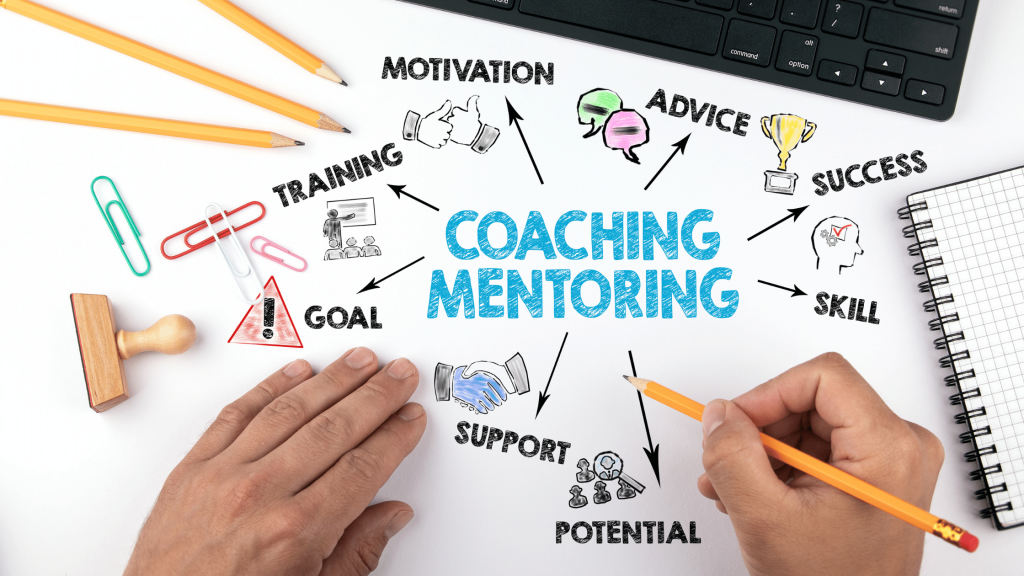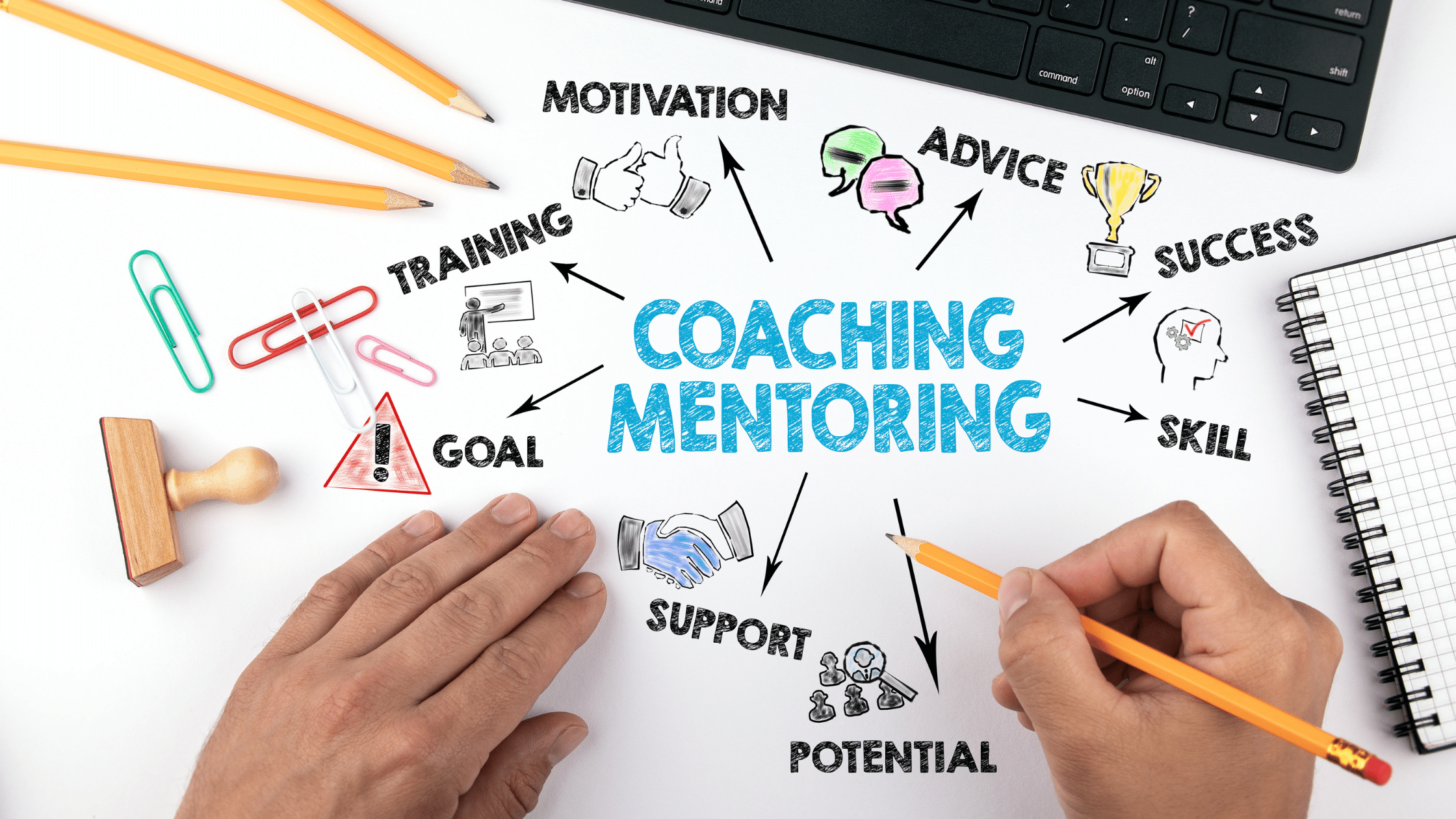Mentorship for new employees is essential. Up to a third of their salary can be spent attracting and recruiting them. Make sure that when they do join your team they're set up for success. In this article, we break down how to start a mentorship programme for new hires.

Structuring An Effective Mentoring Programme
Discover the ultimate guide for corporates to structure and implement high-impact mentoring programmes effectively. Read on to know more.
June 6, 2022
In this constant learning and evolving era, organisations are making sensible investments in training and development. Mentoring programmes have now become an integral part of most companies, including small and medium-sized enterprises. Mentorship programmes guide employees to navigate various career complexities seamlessly, regardless of the roles, responsibilities and designations. This article will give you an insight into what mentoring programmes are all about and how to structure them effectively.
What Is A Mentoring Programme?
A corporate mentorship programme provides a platform for employees with less experience to learn relevant skills and knowledge from professionals with rich experience in those areas. Employers make it conducive for mentors and mentees to exchange ideas, share experiences, and professionally connect through various resources. Mentoring programmes are efficient in building an inclusive work culture when structured appropriately. A mentoring template is the best way to design a formal mentorship programme framework for a given workplace. Creating a high-impact mentoring framework could be daunting as it involves different parameters like the experience of mentors/mentees, geographic location, skill sets to be learned, etc.
How To Structure A Mentoring Programme?
Drawing a proper structure for a mentoring programme is like completing half the job already. The real hard work is often in the process and not in the destination. Thus, creating a detailed plan for a high-impact mentoring programme is imperative.
The different stages of a formal mentoring programme are:
1- Planning Stage
In this stage, the company takes a conscious step towards organising a formal programme for dedicated mentees. This is where critical decisions in terms of the type of the mentoring programme, participants, resources, etc., are made for optimum results.
2- Initiation Stage
The programme participants are introduced to each other in this stage and can interact professionally. Mentees and mentors decide on the goals and timeline of the programme based on their corporate experiences and needs.
3- Mentoring Stage
In the mentoring stage, all the actions happen. Mentors and mentees meet at frequent intervals to share knowledge and achieve their pre-determined goals. Based on the mentorship model selected, the participants indulge in regular training sessions to advance their careers in a streamlined manner.
4- Evaluation Stage
An important metric to realise the success of a mentoring programme is evaluating the process. Mentors provide an honest assessment of the mentees’ progress and accordingly decide whether the formal programme must continue further or could be ended at the point of time.
These phases are essential to understanding the mentoring process. However, it is a different ball game to structure a high-impact mentoring programme.
What Are The 3 C’s Of Effective Mentorship?
Communication, clarity, and commitment are the 3 C’s of effective mentorship. The clarity in terms of the intent of the programme, communication between participants, and commitment towards achieving development goals through the programme are what make the programme genuinely successful.
6 Steps To Structure A High-Impact Mentoring Programme
Follow these steps to chalk out an effective mentoring programme at your workplace.
1- Define The Goals and Objectives of Your Mentoring Programme
Designing a formal mentoring programme with set targets is the most crucial step in the entire process. What are the goals you plan to achieve with this mentoring programme? What would the programme participants get at the end of the training programme? Are there specific career goals that the programme participants would like to achieve? These are questions that will help you chalk out the goals of your programme.
2- Create A Process Flow for Your Mentorship Programme
A great way to execute a mentorship programme is by drawing out a framework or template for the actual sessions. It is the crux of the entire mentoring process and needs keen attention.
Consider the following points while designing your mentoring programme:
How can the participants enrol in the programme?
You may want to consider whether the participants can apply by invitation, or would it be open for all based on the programme’s capacity.
What would be the mentoring programme style?
There are various mentorship models to choose from based on the programme’s need – traditional, one-on-one, peer-to-peer, or reverse mentoring.
On what basis would the mentoring connections be decided?
It is essential to decide how the mentoring relationship is established. It could be based on the skill sets, projects, or teams.
What would the duration of the programme be?
Whether a single session or a series of sessions would help your programme participants and the company achieve the set goals is a critical metric to consider while structuring your mentoring programme.
How would you evaluate the success of the programme?
Various guides, tools, and software can effectively measure programme quality and programme success. It is good to make use of them in a smart way.
3- Select The Right Participants for Your Programme
Today, organisations worldwide are introducing innovative ways to introduce training and professional development programmes in their corporate culture. Effective programme promotion is one of the critical steps in delivering a valuable experience to the programme participants.
For instance, a senior-level executive may not have the bandwidth to attend a mentorship programme in a given month. And so, promoting the programme to them may not be the most intelligent decision. Therefore, alluring the interested set of people is the key to success.
There are different ways to attract an audience for your mentoring programme. Listed below are the action plans for the strategic planning of programme promotion.
- Highlight the key benefits and salient features of the programme to the potential mentors and mentees
- Consider various parameters like experience, expertise in core skills, team, nature of the job, roles and responsibilities, learning goals, geographical location, etc. during promotion
- Provide a suitable mentoring platform for training and development through resources
4- Connect Mentors to Mentees in A Thoughtful Manner
Mentorship works only when both the mentee and the mentor are willing to learn and teach respectively through their experiences. And identifying the correct participants to interact with each other and create a synergy to produce favorable outcomes is the most critical factor for a successful mentoring programme.
A good mentee-mentor relationship works and delivers great results when paired thoughtfully. You may consider several factors like gender, education, job experience, area of expertise, interests, location, and job functions while making the match. Additionally, it is good to decide the selection process and whether you want an algorithm to match the participants or an Admin to do the exact needs careful consideration.
Here are the steps to help you connect mentees to mentors in an organisation:
User profile creation
Creating user profiles based on their interests and demographics will give you a good understanding of the potential participants and help you match them to a mentoring programme based on specific parameters.
Matching process consideration
Once you have the user profiles, you have to select a process to match the mentees to their mentors. It could be done by an Admin Head or be open to self-matching where mentees and mentors have a say in the selection process. Alternatively, you may want to invest in a tool that uses an algorithm to make the selection process smart, swift, and sensible.
5- Provide Resources and Rewards for Effective Mentoring
Now that you have selected the goals, participants, mentoring model, and the matching process of your programme, it is time to kickstart the formal training. Experienced mentors enrol in the formal process to share their skills and knowledge with mentees. It is only fair to recognise their contributions with awards/rewards that can boost their morale and encourage them to be effective leaders.
Another way to enable organisational leaders to do better is by providing them access to resources to train their mentees well. These additional resources could be in the form of best practices documents, guidelines, research papers, case studies, and other tool kits. This does not apply only to mentors, as mentees need the right resources to learn and work towards a successful career.
6- Measure The Success of Your Programme
Has your programme been successful, or has it failed? How would you know if you have not measured key conversion metrics along the way? Decide the metrics you would like to evaluate, along with the purpose of the programme. Employee retention rate, employee satisfaction score, attrition rate, and diversity of skills are a few employee metrics that have been popular across industries.
A Mentoring Template For A Win-win Situation
87% of mentors and mentees believe that mentoring relationships have boosted their confidence levels significantly. When the enthusiasm around these programs is so high, it is logical and smart to have structured corporate mentorship programmes to deliver a valuable experience and build beneficial relationships. In essence, a mentoring template or framework would be an ideal way to seal the deal for employers and the participants of the programme.
Continue reading
Mentoring software helps with mentor-mentee matching, tracking and reporting of your programme so you spend a few hours instead of weeks to manage the programme. If you're trying to understand if you need a mentoring software, this article could be helpful.
Organisations with powerful leadership are 13 times more likely to outshine their competition. This article provides insightful details on how talent managers can employ innovative techniques to attract and retain high-potential employees through customised training programmes.
Peer learning is a highly effective way of collaboration and, when done right, can do wonders for any organisation. Find out more about peer learning and how to implement it in the workplace with this handy guide.
The challenge of remote working makes mentoring more important now than ever before – to increase morale, performance, and motivation. What new approach should we take to how we're mentoring employees in our new normality? Read on to know more.
Mentorship programmes guide employees to navigate various career complexities seamlessly, regardless of the roles, responsibilities and designations. This article will give you an insight into what mentoring programmes are all about and how to structure them effectively.






